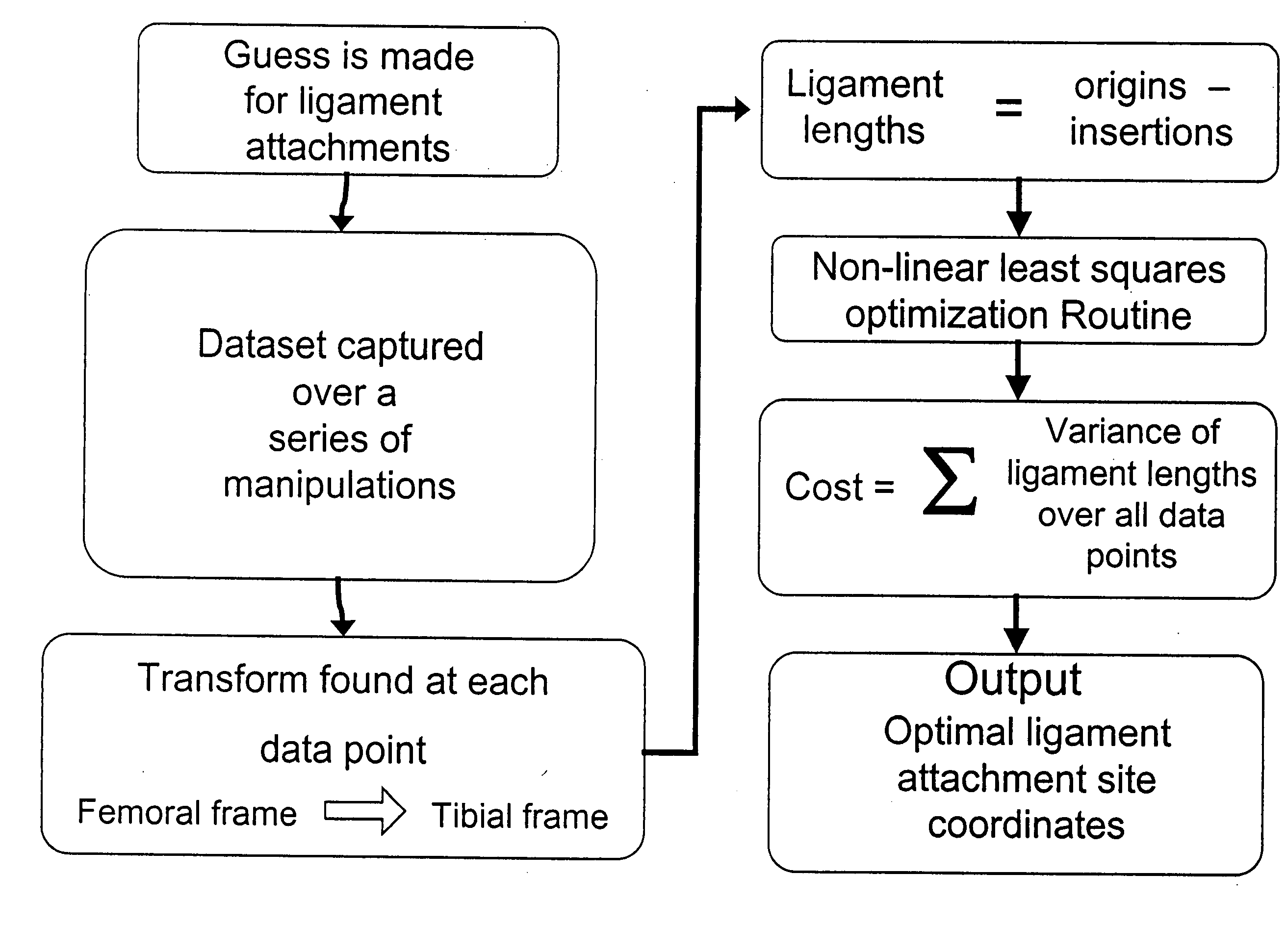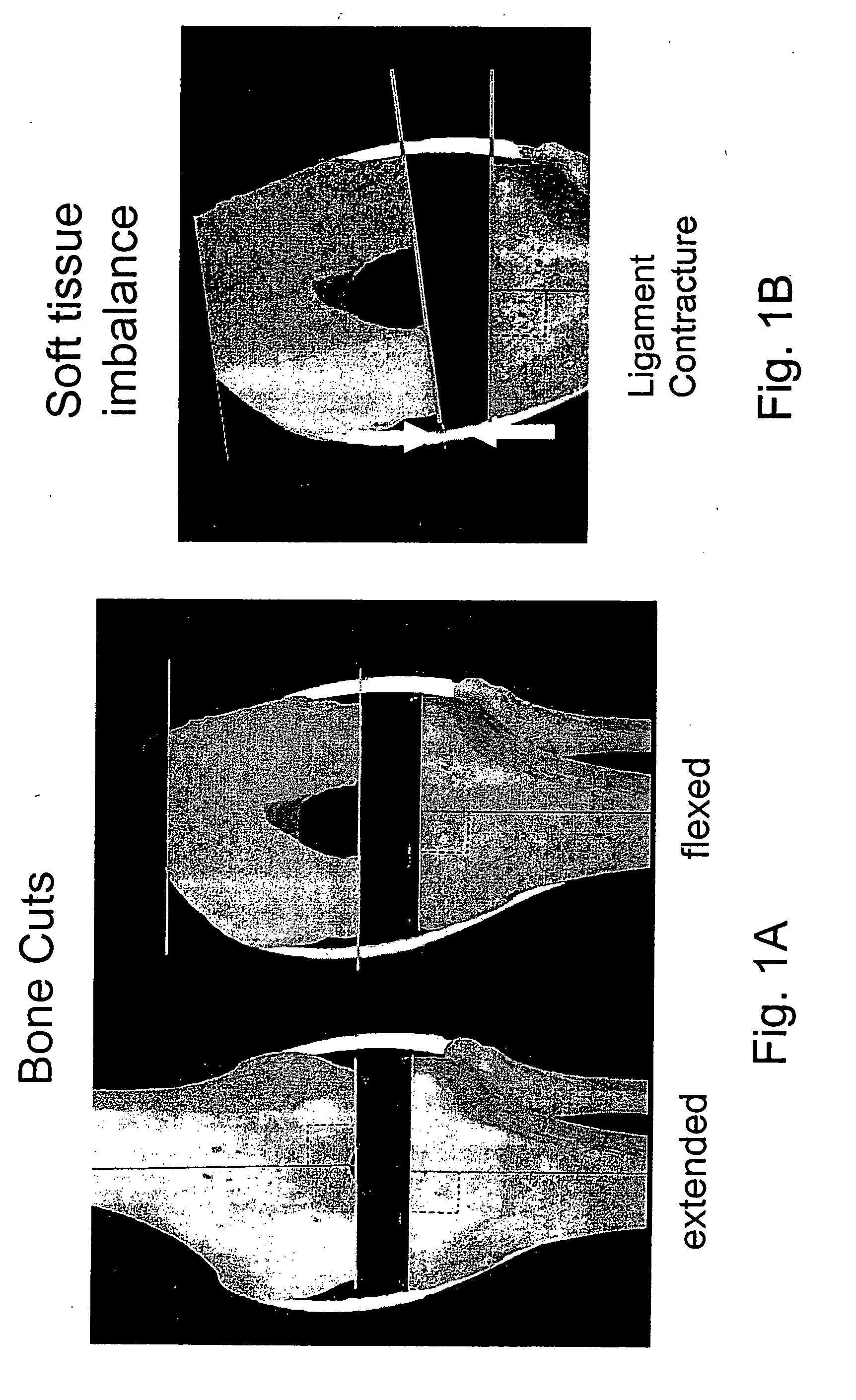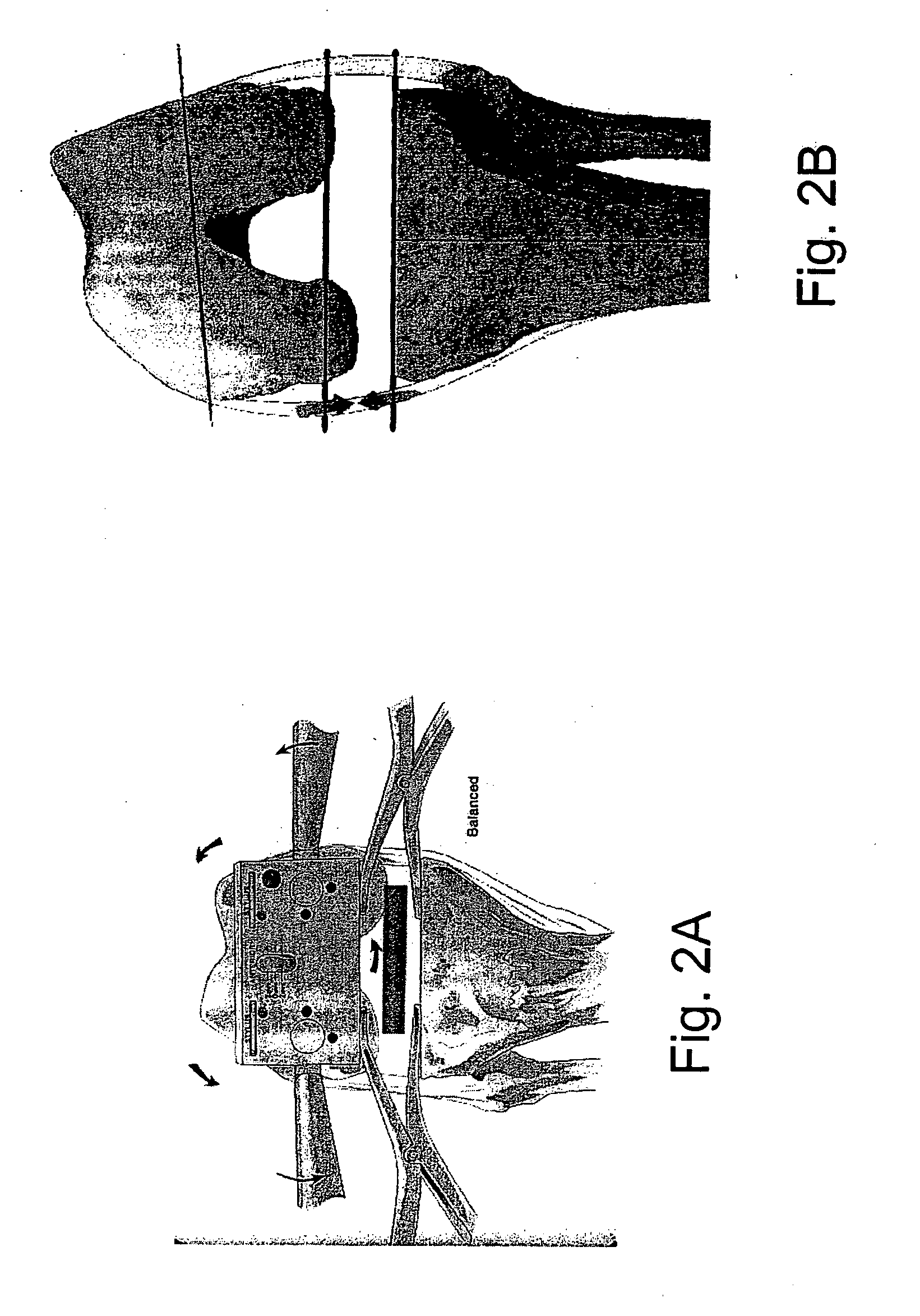Methods and systems for intraoperative measurement of soft tissue constraints in computer aided total joint replacement surgery
a technology of total joint replacement and intraoperative measurement, which is applied in the direction of prosthesis, ligaments, osteosynthesis devices, etc., can solve the problems of inability to enter into prior planning, inability to accurately measure and inability to achieve prior planning. to achieve the effect of maintaining the soft tissue balance of the replacement kn
- Summary
- Abstract
- Description
- Claims
- Application Information
AI Technical Summary
Benefits of technology
Problems solved by technology
Method used
Image
Examples
example i
Determination of Ligament Length and Attachment Sites with Porcine Subjects
[0041] The Flashpoint 5000 system has a typical accuracy of approximately 0.5 mm in tracking infrared emitting diodes (IREDs) within a 1 m diameter volume. The noise of the system was determined from the data collected from one dataset from one trial. The position of the emitters attached to the tibial array was used to construct a tibial reference frame. A transform was then found from the femoral frame into the tibial frame and the tibial emitter positions were transformed into the tibial frame. This was repeated for all data points in the set and the error in the emitter locations calculated. The error was determined to be 0.2 mm SD for typical data sets. A perfect data set was generated using Working Model 3D© version 3.0 (Working Model Inc., 1996) with a model of similar geometry as the test specimens. White noise with zero mean and 0.2 mm SD was added to the generated dataset to represent the measureme...
example ii
Component Placement Model
[0101] A dynamic mechanical model was created using the software package Working Model 3D©™ (Working Model Inc.) to validate the method described herein. The dynamic model consisted of two rectangular blocks, a 25 mm cylinder and a flat plate representing the two bones, femoral component and tibial component, respectively. Ligaments were represented by spring / damper constraints with the spring constants set to zero in compression. The spring attachment points were set to approximate anatomical locations, however for simplicity the collateral ligaments were taken to be symmetric about the sagittal plane. The prosthetic components were virtually implanted with the femoral component centered about the collateral origins.
[0102] The passive kinematic model was validated first. The femoral component was set at a distinct flexion angle and was virtually released, coming to rest on the tibial component at the equilibrium defined by the attached springs. Contact be...
PUM
 Login to View More
Login to View More Abstract
Description
Claims
Application Information
 Login to View More
Login to View More - R&D
- Intellectual Property
- Life Sciences
- Materials
- Tech Scout
- Unparalleled Data Quality
- Higher Quality Content
- 60% Fewer Hallucinations
Browse by: Latest US Patents, China's latest patents, Technical Efficacy Thesaurus, Application Domain, Technology Topic, Popular Technical Reports.
© 2025 PatSnap. All rights reserved.Legal|Privacy policy|Modern Slavery Act Transparency Statement|Sitemap|About US| Contact US: help@patsnap.com



